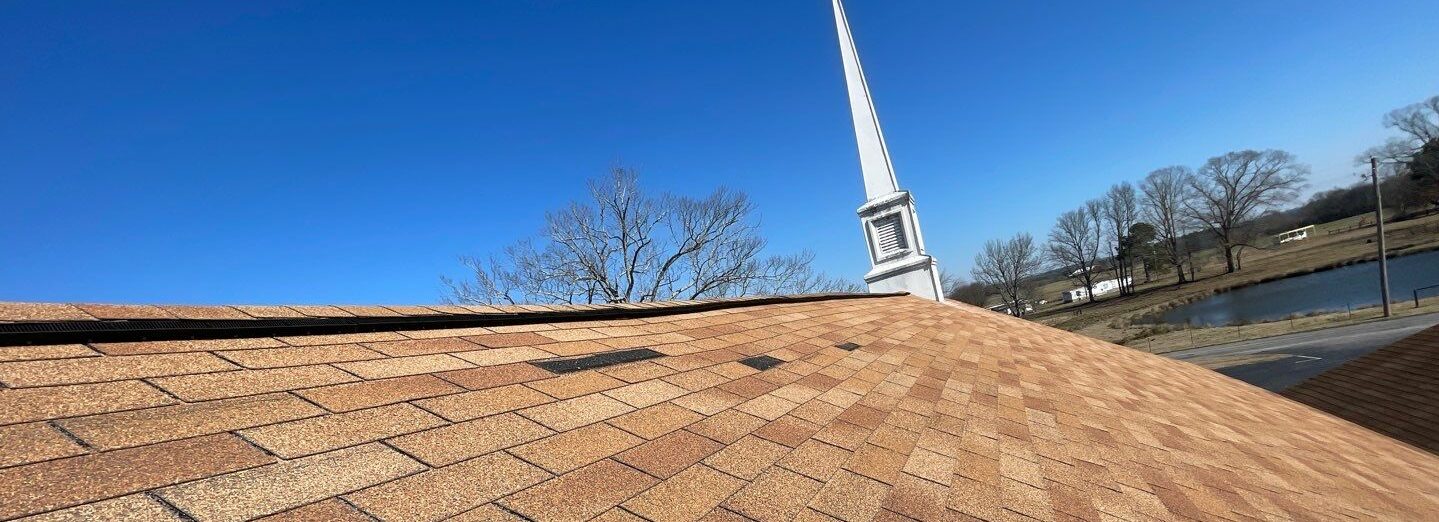Ten reasons why roofs fail and what can be done about it. In this post, I will discuss the 10 reasons that cause roofs to fail. And once we are educated on the causes, we will discuss how asphalt shingle reconditioning by Roof Shield can prevent these failures.
Let’s dig into those reasons.
1. Age
Asphalt shingles have a finite lifespan ranging from 15 to 30 years, depending on the quality of the shingle. As shingles age, the oils in the asphalt begin to dry out, causing the shingles to become brittle and less flexible. This makes them more prone to cracking, curling, and granule loss. (more on granule loss)
These issues accumulate with time, and the shingles become less effective at protecting the roof. And over time, the loss of protective granules and the effects of weathering contribute to the weakening of the asphalt shingles’ waterproofing capabilities. When shingles reach the end of their lifespan, they are more susceptible to leaks and damage, putting the roof’s structure at risk.
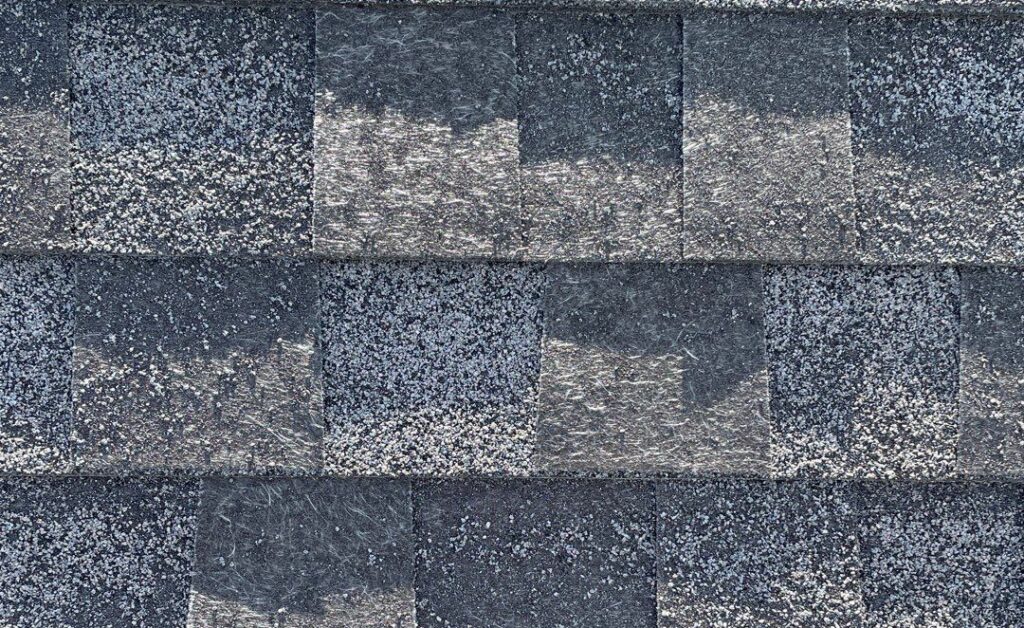
2. Poor Installation
The longevity and performance of asphalt shingles depend heavily on proper installation. Improper installation can significantly impact the performance and lifespan of roof shingles. Common mistakes include nailing shingles too high or low, using the wrong type or the wrong number of nails, installing shingles without proper underlayment, or using damaged or mismatched shingles. These errors can lead to water leaks, wind uplift, and premature deterioration.
It is important to hire a reputable contractor to ensure proper installation. One that adheres to the manufacturer’s guidelines and industry best practices. Proper installation techniques improve the durability of the roof as well as maintain the warranty coverage provided by the shingle manufacturer.
3. Weather
Extreme weather can take a toll on the lifespan and performance of shingles. Strong winds can lift or tear shingles, while hail can cause dents or punctures. Even heavy rain can wash away protective granules and expose the underlying asphalt, leading to accelerated deterioration. Prolonged exposure to UV rays can also cause the asphalt to dry out and become brittle.
Weather patterns vary among regions, and some areas may be more prone to specific types of weather-related damage. Homeowners should consider local weather conditions when selecting shingles to ensure appropriate protection.
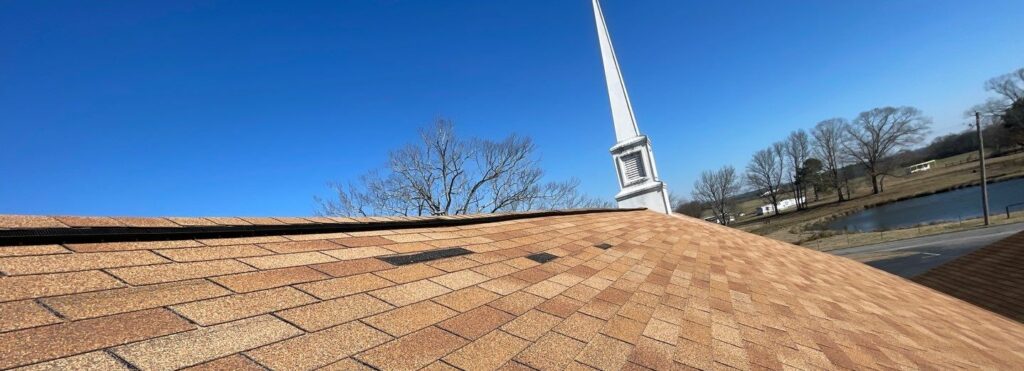
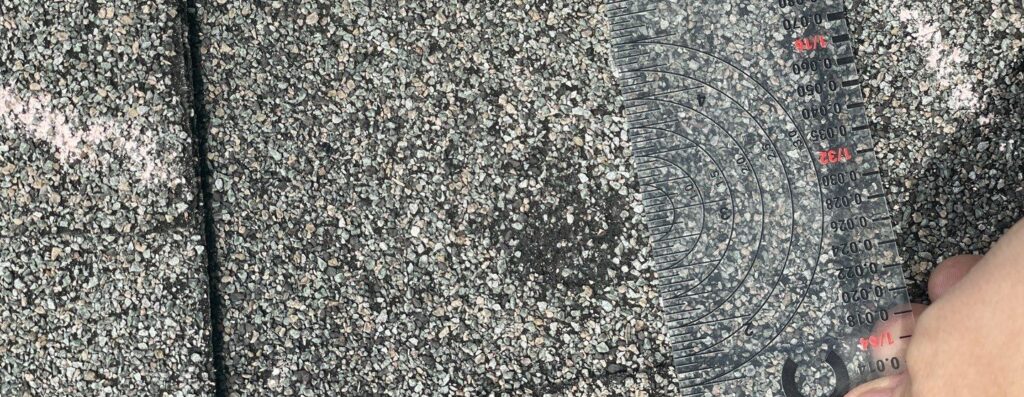
4. Thermal Cycling
Temperature fluctuations are a natural part of daily weather patterns, but they can have a detrimental effect on asphalt shingles. Fluctuating temperatures cause materials to expand and contract. Repeated cycles of expansion and contraction can weaken the bond between the granules and asphalt, causing granule loss or cracks in the shingles. In extreme cases, this may lead to curling or complete shingle failure.
To minimize the impact of thermal cycling on shingles, proper ventilation and insulation help maintain a stable temperature in the attic, reducing the amount of expansion and contraction. Additionally, using high-quality shingles with better resistance to thermal cycling can also help prolong their lifespan.
5. Manufacturing Defects
Most asphalt shingles are manufactured to high standards, but defects can sometimes occur during the production process. Examples of manufacturing defects include inconsistent granule distribution, inadequate asphalt coating, blistering, and delamination. Furthermore, defective shingles may not provide adequate protection and may fail well before their expected lifespan.
To protect against manufacturing defects, homeowners should research and select reputable shingle manufacturers that offer warranties on their products. If a defect is discovered, homeowners should contact the manufacturer and take the necessary steps to address the problem.
6. Inadequate Ventilation
Attic ventilation helps maintain a stable temperature and reduces moisture buildup in the roof system. Poor ventilation can cause excess heat and humidity, accelerate the aging process of shingles, cause the wood decking to warp, and promote mold and mildew growth. These factors can contribute to shingle failure and reduced roof performance.
To ensure proper ventilation, homeowners should consult with a roofing professional to assess their attic ventilation system and make necessary adjustments. This may include installing ridge vents, soffit vents, or gable vents to provide adequate airflow and maintain a balanced attic space.
7. Moss and Algae Growth
The growth of moss and algae on asphalt shingles can be both unsightly and damaging. Moss and algae can retain moisture and cause shingles to deteriorate prematurely. Moss growth can lift shingles, allowing water to penetrate the roof system. Algae can cause unsightly black streaks on the shingles, degrading their appearance and potentially affecting their protective capabilities.
Homeowners can take several preventive measures to prevent moss and algae growth. Including trimming overhanging tree branches to reduce shade and moisture on the roof, regularly cleaning debris from the roof surface, and installing zinc or copper strips near the ridge of the roof to inhibit growth.

8. Ice Dams
Ice dams are a common issue in colder climates, where snow and ice can accumulate on the roof. They form when snow on a roof melts and refreezes at the roof’s edge, forming a barrier that prevents water from draining off the roof. This trapped water can then seep under the shingles, causing leaks, rot, and damage to the roof’s structure. In some cases, ice dams can even lift shingles, compromising the roof’s integrity.
To prevent ice dams, proper insulation and ventilation in the attic are crucial, as they help maintain a consistent roof temperature and prevent the snow from melting and refreezing. Installing ice and water shield membranes along the eaves can also provide an extra layer of protection against ice dams and helps stop water penetration.
9. Improper Maintenance
Regular maintenance is often neglected and makes a huge difference in the longevity of asphalt shingle roofs. And a lack of maintenance can exacerbate existing issues and lead to premature shingle failure. This includes not cleaning debris from gutters and downspouts, failing to inspect the roof for damage, and neglecting necessary repairs. Proactive maintenance can help extend the lifespan of asphalt shingles and prevent failure.
Homeowners should develop a routine maintenance schedule, which may include annual or biannual inspections, gutter cleaning, and prompt repairs when needed. During these inspections, homeowners should look for signs of damage, such as missing or cracked shingles, granule loss, or moss and algae growth. Addressing these issues early can help prevent more significant problems and extend the life of the roof.
10. Mechanical Damage
The impact of falling tree limbs, storm debris, or walking on the roof can cause mechanical damage to asphalt shingles. This damage can include cracks, punctures, or dislodged shingles and can compromise the roof’s ability to protect against water intrusion and leaks.
To prevent mechanical damage, homeowners should keep trees trimmed back from the roof, regularly clean debris from the roof surface, and avoid walking on the shingles whenever possible. If mechanical damage occurs, it’s essential to address the issue promptly to prevent further damage and protect the roof’s integrity.
How Can Asphalt Shingle Rejuvenation Prevent Roof Failures
Asphalt shingle rejuvenation is a process that can help extend the life of your shingles by restoring their original properties. Aside from ice dams and poor installation, roof rejuvenation directly addresses each of the concerns above. For instance:
- Age: Rejuvenation treatments can restore the oils and resins in the shingles, making them more flexible and less brittle. This can help slow down the aging process and extend the life of the shingles.
- Weather: By restoring the shingles’ original properties, rejuvenation can help them better withstand harsh weather conditions like wind, rain, and hail, making them less prone to damage.
- Thermal cycling: Rejuvenated shingles have improved resistance to the damage caused by daily expansion and contraction, reducing the likelihood of granule loss, cracks, or curling.
- Manufacturing defects: While rejuvenation can’t fix all factory defects, it can help to some extent by restoring the oils and resins in the shingles, improving their overall performance and durability.
- Inadequate ventilation: While rejuvenation doesn’t directly address ventilation issues, it can help to extend the life of shingles that may have been negatively impacted by poor attic ventilation. This can buy time for homeowners to address the underlying ventilation problem.
- Moss and algae growth: Our process at Roof Shield is to clean a roof before restoring it. We neutralize and remove moss and algae and then apply the rejuvenation with our product Roof Reboot. The result is a roof that looks amazing and resists moss and algae growth moving forward.
- Improper maintenance: Rejuvenation can help reverse the damage caused by a lack of maintenance. Giving homeowners a chance to establish a proper maintenance routine going forward.
- Mechanical Damage: In addition to combating the effects of age, rejuvenation makes the shingle less susceptible to mechanical damage, such as impacts from limbs.
By bringing the performance of an old shingle back to the way it was new, a roof rejuvenation from Roof Shield can not only restore roofs but prevent failures from happening in the first place. If you are interested in knowing more about Roof Shield and its line of products specifically tailored to ‘Clean, Restore, and Protect’ asphalt shingles, reach out today.
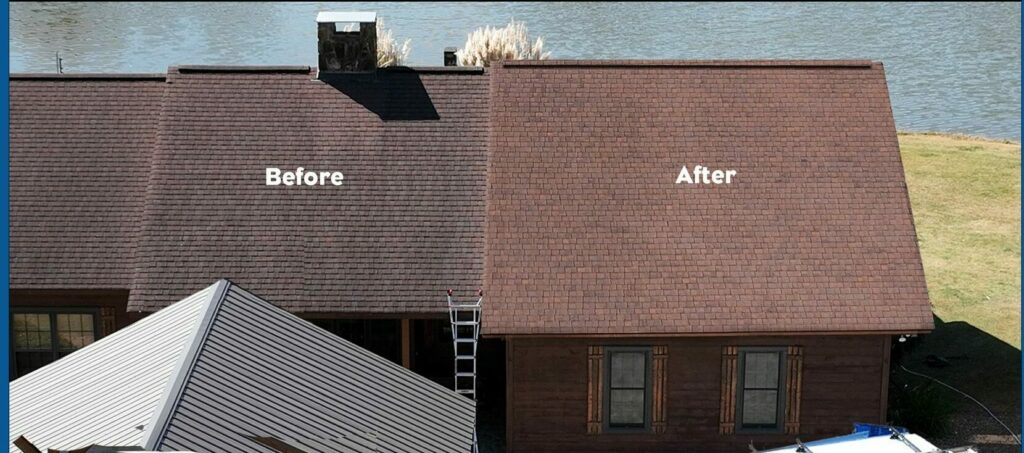
And if you are a roofer, soft washer, or entrepreneur looking to enter the fast-growing asphalt shingle rejuvenation market? Roof Shield sells to and trains applicators to service homeowners nationwide. Contact Roof Shield today.
To stay in touch with Roof Shield and always see our latest posts, like and subscribe to our:

